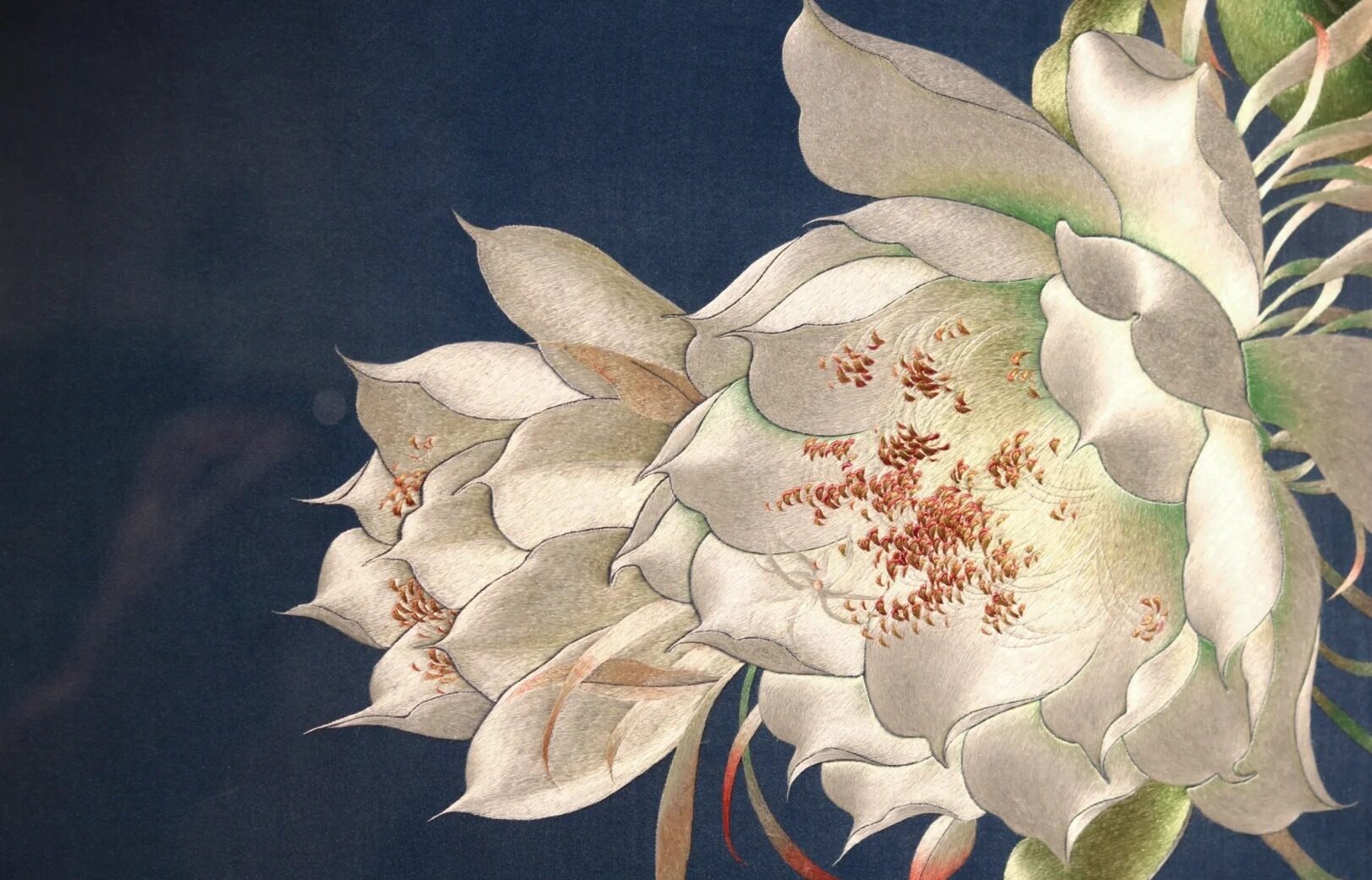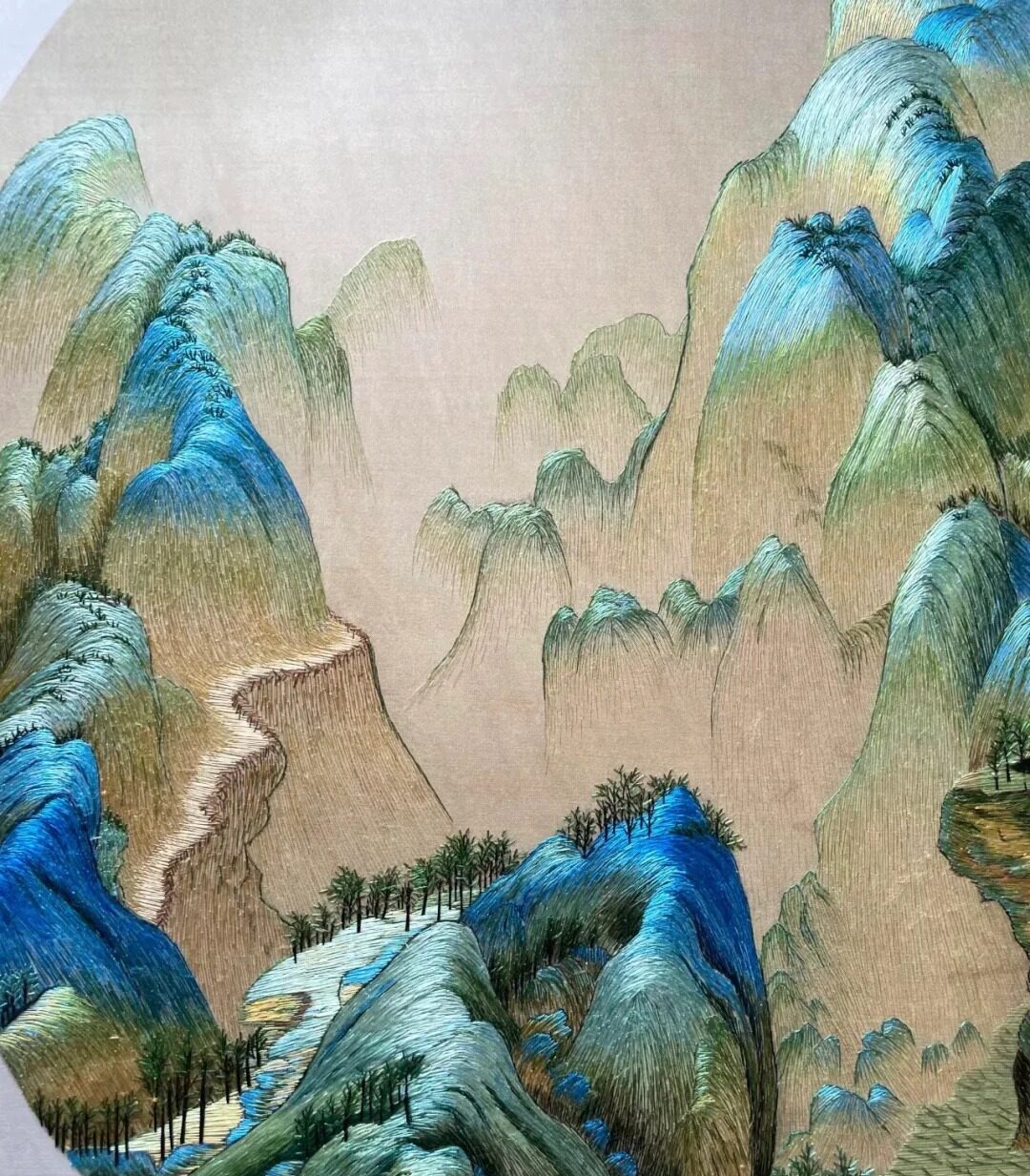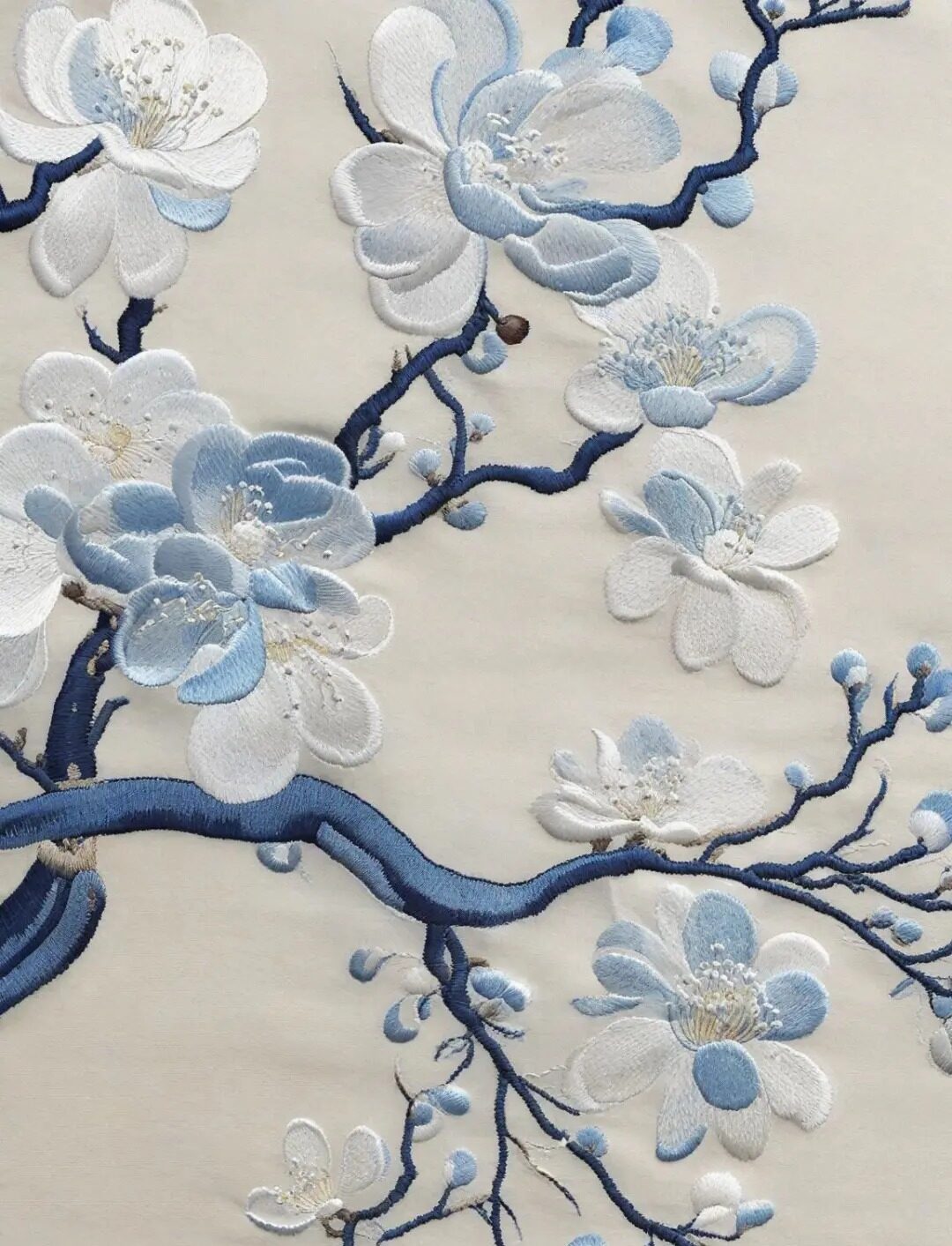Introduction to Su Embroidery
Su embroidery, originating from Suzhou in Jiangsu Province, stands as one of China’s Four Great Embroideries. This exquisite art form, with roots dating back to the Three Kingdoms period (220-280 AD), has evolved into a pinnacle of Chinese craftsmanship, renowned for its delicacy and intricacy.

Characteristics of Su Embroidery
Su embroidery is distinguished by:
- Impeccably even stitches
- Subtle color gradations
- Lifelike representations
- Unique “double-sided” technique
Common motifs include:
- Suzhou’s picturesque gardens
- Animals, particularly cats and fish
- Flowers, with peonies being a favorite
The hallmark “double-sided” embroidery showcases identical images on both sides of the fabric, a testament to the artisan’s extraordinary skill.

Techniques and Craftsmanship
Su embroiderers employ various stitching methods:
| Stitch Type | Description | Common Use |
|---|---|---|
| Split Stitch | Creates fine lines | Outlining, details |
| Seed Stitch | Tiny dots of color | Texture, shading |
| Satin Stitch | Smooth, flat surface | Large areas, petals |
Color blending is achieved by using silk threads so fine that a single strand can be split into up to 48 thinner filaments, allowing for incredibly nuanced shading.
Tools and materials include:
- Fine needles
- Silk threads
- Translucent silk fabric
- Wooden embroidery frames
Famous Su Embroidery Pieces
Historical masterpieces like the “Embroidered Portrait of Emperor Guangxu” showcase the art form’s ability to rival painting in detail and expression.
Contemporary works, such as Yao Jianping’s “Mona Lisa,” which took over a decade to complete, demonstrate Su embroidery’s enduring relevance and adaptability.

Su Embroidery in Modern Times
Today’s Su embroiderers are innovating while preserving tradition:
- Incorporating modern themes and abstract designs
- Collaborating with fashion designers for haute couture pieces
- Utilizing new materials while maintaining traditional techniques
The Cultural Significance of Su Embroidery
Su embroidery is more than an art form; it’s a cultural touchstone:
- Recognized as an Intangible Cultural Heritage of China in 2006
- Embodies Suzhou’s reputation for refinement and artistry
- Influences contemporary Chinese textile arts and fashion

Traveler’s Guide to Su Embroidery
For travelers eager to explore this silken art:
- Must-Visit Locations:
- Suzhou Embroidery Research Institute
- Suzhou Silk Museum
- Zhenhu Embroidery Village
- Learning Opportunities:
- Short courses at Suzhou Embroidery Art Academy
- Demonstrations at local workshops in Zhenhu
- Purchasing Tips:
- Look for the official Su Embroidery certification
- Examine both sides for true double-sided pieces
- Reputable sellers: Arts & Crafts Store at Suzhou Museum, Suzhou Embroidery Research Institute shop
- Incorporating into Your Itinerary:
- Morning: Visit Suzhou Silk Museum for historical context
- Afternoon: Attend a demonstration at Suzhou Embroidery Research Institute
- Evening: Shop for authentic pieces in Pingjiang Road’s artisan shops
As you explore Suzhou, let the delicate threads of Su embroidery weave you into the fabric of the city’s rich cultural tapestry. In the narrow lanes of the old town, you might glimpse embroiderers at work, their nimble fingers dancing across silk canvases, bringing vibrant scenes to life stitch by stitch.
Imagine the patience required to create these masterpieces – some large pieces can take years to complete. As you admire a finished work, consider the thousands of hours of meticulous labor it represents, each tiny stitch a testament to the artisan’s dedication and skill.
Whether you’re watching a master embroiderer demonstrate their craft, trying your hand at a simple design in a workshop, or selecting a piece to take home, you’re participating in a tradition that has captivated people for nearly two millennia. The subtle sheen of silk, the impossibly fine gradations of color, the lifelike details that seem to leap from the fabric – all these elements combine to create an art form that is uniquely Chinese and universally admired.
As you leave Suzhou, your Su embroidery souvenir will serve as more than just a beautiful decoration. It’s a tangible connection to the city’s history, a piece of living art that carries within its threads the stories of countless artisans who have preserved and perfected this craft through the ages. Let it remind you of the beauty that can be created when tradition meets innovation, and of the enduring allure of Chinese artistry.





